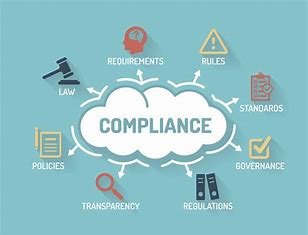Learn about FDA’s requirements for laboratory controls under cGMP regulations. Discover best practices for maintaining compliance and ensuring product quality.
Compliance with FDA’s Requirements in Laboratory Controls
The cGMP regulations require establishing and documenting laboratory control mechanisms. This involves specifying in extensive detail on what should be included in these processes at every step for specifications, standards, sampling plans, test procedures and other aspects of quality control. During the development of these procedures, including staff from the right organizational unit will help establish a complete and accurate set of controls. Further, with the help of knowledge accumulated from departments like manufacturing, quality control and regulatory affairs, pharmaceutical companies can establish efficient laboratory control mechanisms that comply to 21 CFR Part 211 Subpart I guidance.
Pharmaceutical production involves compliance with a variety of rules and regulations to guarantee that medications are safe, effective, and of high quality. One of the most crucial regulations is the Title 21, Chapter I, Subchapter C, Part 211 or what is commonly called as Current Good Manufacturing Practice (cGMP) for Finished Pharmaceuticals. This regulation, which is administered by the Food and Drug Administration (FDA), a unit of the Department of Health and Human Services, specifies this general framework for those quality systems in pharmaceutical manufacturing.
General Requirements
Establish and document laboratory control mechanisms consistent with cGMP regulations. There are several simple rules that will help you follow the general requirements in Subpart I:
a) Organizational Unit Involvement: The right organizational unit involves experts from manufacturing, quality control, regulatory affairs and any other departments in the development process of specifications, standards, sampling plans, test procedures and all other laboratory control mechanisms. You should use interested parties to help assist with this and ensure that these controls are complete and accurate.
b) Documentation: Proper documentation plays a significant role in compliance with cGMP regulations. The standards set out in Subpart I must be recorded at the timing of performance. Keep complete records of specifications, standards, sampling plans, test procedures and deviations from these controls along with justification, and a large number of samples for re-test that is traced back to the production process. That makes it easier to keep the necessary documentation handy and arranged in a more comfortable manner for compliance manager.
Laboratory Controls
Laboratory controls are critical to provide assurance of the identity, strength, quality, and purity of components, bottle closures, in-process materials, labels, bottles, and products.
Compliance with laboratory control requirements. — Tips for Maintaining Compliance
Specifications and Sampling:
Establish specifications, sampling plans, test procedures or other methods for the release of each component of drug products such as containers, closures and in-process material used in production as well as labeling specifications. These rules and regulations should adhere to evidence-based science and be based on specified manufacturer quality specifications. Also, remember to describe the direction of sampling and testing in the production stage in your specifications to make it easier for any personnel who would take part in sampling during manufacturing.
For example, ensure that you take representative samples from each lot of each shipment of components, drug product containers, closures, and labeling when you are sampling. These samples should be correctly labelled for traceability. Explain the characteristics of the materials that will be tested, and potential hazards or risks they pose to sampler and provide safety instructions on handling.
In-process Material Testing:
If in-process material is an intermediate which might be transformed into a form to be used in pharmaceutical manufacturing, Write specifications and sampling for in-process materials ensuring they stay within the parameters of quality. These specifications should be aligned with the intended use of the materials and the needs of the drug product. As with other testing protocols, collect samples of in-process materials that are representative and suitable identified for the test.
Drug Product Testing:
For drug products, written descriptions of sampling procedures and appropriate specifications are essential. The procedures must state how and where the samples will be taken, and tests that must be performed, amount of sample to be taken for testing. The samples should be representative of the characteristics of the entire batch of drug products. Clearly defined samples provide traceability through every manufacturing step.
Calibration of instruments:
ccurate and reliable measures in terms of instrument, apparatus, gauge, and recording tool calibration are important for reliable testing. Develop and maintain a written program for calibration of instruments which includes specific directions, schedules, and limits for accuracy and precision followed by remedial action if accuracy or precision limits are not achieved. Calibrate and maintain instruments in accordance with established specifications. Instruments that fail to meet calibration requirements should not be used until they have been recalibrated or repaired and deemed as accurate and reliable.
Manufacturing of finished pharmaceuticals is required to follow the guidelines on Current Good Manufacturing Practice for Finished Pharmaceuticals provided by the FDA in order to secure products safety and quality. The requirements in Subpart I of Part 211 must be followed to achieve strong laboratory controls and the reproducibility of manufacturing processes.
Conclusion
For more Information on cGMP For Manufacturers who would like additional guidance, here are a few tips for how to navigate the regulatory landscape and be in compliance with the cGMP regulations. Always keep in mind that compliance is not a one-time job, periodicreviews and updates of laboratory controls are needed to remain compliant with the evolving regulatory environment. Prioritizing compliance and implementing a reliable laboratory control will not only improve the safety of products but also reinforce confidence in the overall pharmaceutical industry so it can continue to progress.
Contact BioBoston Consulting or visit https://biobostonconsulting.com for more information on how we can help your organization.


